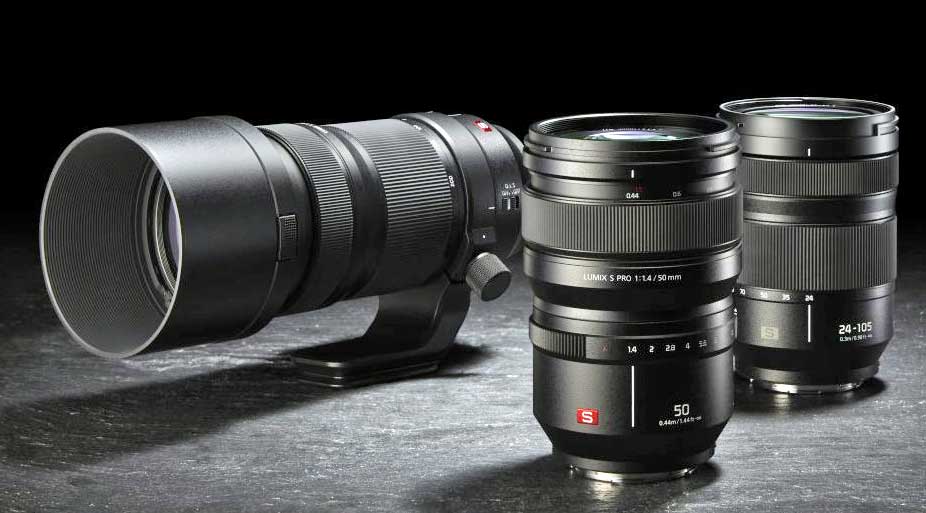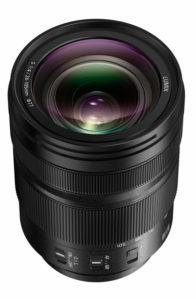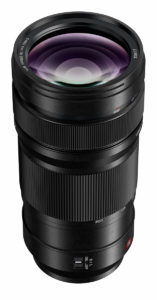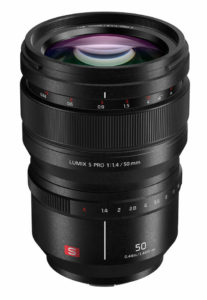The Lumix S 24-105mm f4 Macro O.I.S. is the pick of Panasonic’s three S-series lenses. It covers a really useful focal length range and does so very well. It’s also quite keenly priced for a full frame mirrorless lens; cheaper than the Sony FE 24-105mm f4 G OSS, although marginally more expensive than Canon’s 24-105mm f4 IS USM lens.
The Lumix S PRO 50mm f1.4 is a professional lens and both knowledge and care are required to get the best out of it. This lens is the most challenging to use effectively; while the Lumix S PRO 70-200mm f4 O.I.S covers a useful range for many photographers and overlaps nicely with the 24-105mm zoom to cover an 8.3x total span. Combine the 24-105mm f4 and 70-200mm f4, and photographers can cover everything from wide-angle to moderate telephoto shots.
RRP: Lumix S 24-105mm f4 $1899, Lumix S 50mm f1.4 $3599, Lumix S 70-200mm f4 $2499.
 Concurrently with the new S1 and S1R cameras, Panasonic’s three new lenses are based on the Leica L-Mount system, which has been adopted by the ‘L-Mount Alliance’ manufacturers – Leica, Panasonic and Sigma.
Concurrently with the new S1 and S1R cameras, Panasonic’s three new lenses are based on the Leica L-Mount system, which has been adopted by the ‘L-Mount Alliance’ manufacturers – Leica, Panasonic and Sigma.
The advantages of this mount include a large inner diameter of 51.6 mm, which enables extremely fast lenses and compact dimensions; a future-proof lens-to-camera communication interface and the ability to build sealed systems that are resistant to dust and moisture.
Comprising two zooms and one prime lens, the Lumix S 24-105mm f/4 MACRO O.I.S will be offered as a ‘kit’ lens. All three new lenses are dust and splash-resistant and can withstand use in temperatures down to -10 degrees Celsius. None of these lenses are suitable for sports and wildlife photography but Panasonic is committed to designing and developing 10 or more lenses by 2020, with a focus on its Lumix S PRO series.
Additional lenses will also be developed to further expand the S Series lens line-up.
 Lumix S 24-105mm f/4 MACRO O.I.S.
Lumix S 24-105mm f/4 MACRO O.I.S.
A versatile standard zoom lens, it supports 0.5x macro shooting with a minimum focusing distance of 0.3m. Its optical design consists of 16 elements in 13 groups and includes two aspherical lenses and two ED (Extra-low Dispersion) lenses for suppressing chromatic aberration and achieving high resolution.
The front element of the lens has a fluorine coating that repels water and oil, making it easy to keep clean. The filter diameter is 77mm, and the lens has a 9-blade circular aperture diaphragm.
A high-precision linear motor achieves sensor drive at a maximum speed of 480 fps for fast autofocusing. Panasonic claims a minimum focus acquisition time of just 0.08 second at a light level of 11EV with the 24mm focal length. Focusing is also silent, making this lens ideal for recording video. A special mechanism suppresses focus breathing, which can create distractions when shooting video clips.
The ability to shoot at half life-size is an advantage not provided by many other lenses in this zoom range, as is the built-in image stabilisation. Its physical size and weight are a comfortable match for either camera body and it is competitively priced.
This lens delivered remarkable consistence in resolution across both its aperture and focal length ranges in our tests, and centre-of frame resolution was above average right up to f/16 with all focal lengths. Edge softening was apparent at f/4.0 and f/4.5 but relatively minor thereafter.
Bokeh was heavily dependent upon the evenness of the background lighting and the ‘macro’ capabilities are restricted to the 105mm focal length. Autofocusing was generally fast and very quiet and stabilisation was very effective. These factors combine to represent excellent overall performance.
 Lumix S PRO 70-200mm f/4 O.I.S.
Lumix S PRO 70-200mm f/4 O.I.S.
The Lumix S PRO 70-200mm f/4 O.I.S. telephoto zoom takes over where the 24-105mm leaves off, covering a range of almost 3x zoom magnification. Supplied with a removable tripod mount, it can be used both hand-held and tripod mounted. This lens is equipped with a focus clutch mechanism that engages autofocus when pushed forward and manual focus when pulled back.
The optical design comprises 23 elements in 17 groups with one aspherical and three ED (Extra-low Dispersion) lenses to suppress both axial chromatic aberration and chromatic aberration of magnification. The front element has a fluorine coating to repel moisture, oil and dust.
The focal length range is useful for portraiture and the macro capabilities enable it to be used for close-ups of subjects like larger flowers and insects and pet portraits. Near-silent focusing and zooming and its immunity to focus breathing make it ideal for recording video.
Autofocusing is fully internal and the double focus system combines a linear motor and stepping motor in a system that uses data from the DFD (Depth From Defocus) contrast based autofocus system and operates at up to 480 fps for fast, high-precision autofocusing.
The ‘PRO’ designation and relatively high price tag indicate the ruggedness and durability of this lens, which is also a fine performer. Like the 24-105mm lens, it maintains high resolution across almost all of the focal length and aperture ranges, with diffraction kicking in at f/16.
The deep, cylindrical lens hood eliminated most traces of ghosting and flare in backlit subjects and it was quite difficult to force the lens to flare. The minimum focusing distance of 92 cm provides a maximum magnification of one quarter lifesize, which is quite good for a lens of its type. Bokeh quality is best when backgrounds are evenly lit. We found overall performance to be generally good and we can’t fault the focusing and stabilisation systems.
 Lumix S PRO 50mm f/1.4
Lumix S PRO 50mm f/1.4
Panasonic describes its first prime lens as a ‘reference-quality’ model for the S-series that ‘sets a new benchmark in image quality’.
With an optical design comprising 13 lenses in 11 groups and a fast, f/1.4 maximum aperture, this lens is of necessity, large and heavy. Two aspherical lenses and three ED (Extra-low Dispersion) lenses suppress chromatic aberration while three aspherical elements control astigmatism and deliver high resolution. Like other S-series lenses it is dust-and splash-resistant.
This lens is equipped with a focus clutch mechanism for instant AF/MF switching and boasts an 11-bladed iris diaphragm that closes to a circular aperture for attractive bokeh. A double focus linear/stepping motor system provides fast, high-precision AF based on its proprietary, contrast-based DFD (Depth From Defocus) technology. This lens is also immune to focus breathing, making it ideal for recording video.
The 50mm focal length is useful for genres as diverse as landscapes, fashion, product, event, street and travel photography. But at its maximum aperture, depth of field is wafer thin and it’s easy to spoil shots by just missing the focus.
Our tests showed this lens to be a capable performer that delivered its highest resolution at f/4. Edge softening was substantial at apertures between f/1.4 and f/4.0, which is expected for such a fast lens. Common aberrations were either minor or negligible and the lens was highly resistant to ghosting and flare.
Close focusing capabilities are limited by the 44 cm minimum focus, which restricts options to larger flowers and medium-sized animals. But the fast maximum aperture of the lens is ideal for selective focusing. Bokeh quality is best with evenly-lit backgrounds. The heavy weight of this lens made it possible to shoot hand-held at shutter speeds as slow as 1/10 second and obtain a high percentage of sharp images.
Distributor: Panasonic Australia
– Margaret Brown
Want to know more? Here’s a more comprehensive review of the 24-105mm f/4, 50mm f/1.4, and 70-200mm f/4.





Be First to Comment